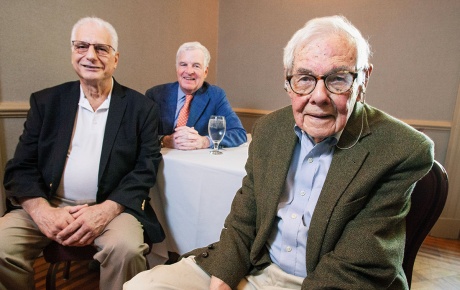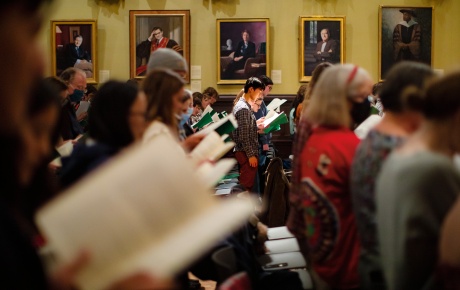Thank you for the excellent story by Charlotte Bruce Harvey ’78 about Sonja Brookins Santelises ’89 and the Baltimore schools in the January/February BAM (“The Children’s Crusader”). However, there was a factual error I wanted to point out in the article’s introduction. Describing Baltimore, Harvey writes that “tourists stroll along Harborplace, snapping pictures of one another before the USS Constellation, the first U.S. naval vessel commissioned to intercept slave ships after the Emancipation Proclamation.”
The Constellation’s mission to intercept slave ships actually predates the Emancipation Proclamation of 1863 by many years. The ship’s website explains that it entered active service as part of the African Squadron to intercept slave ships in 1859. While the Emancipation Proclamation of 1863 set the wheels in motion to free the slaves, importing slaves into the United States was illegal starting in 1808. The navy operated the African Squadron from 1819 to 1861 to enforce the ban on importing slaves.
Victor Houser ’81
New York City
[email protected]
It was a thrill to see the story about a young dynamic woman in charge of Baltimore’s public schools who believes in the potential of poor and minority students. I have devoted my work life to Head Start, the remnant of the War on Poverty that remains strong. When I visit classrooms around the United States, I am always moved by the bright, capable, very young children I meet, and I fear for their futures when the dreams they have may be dashed by inappropriate teaching and lack of belief in their abilities. To know there is a person in the public schools who will nurture these children is a great relief. Thank you for the article.
Frances Murphy Araujo ’61
Providence
[email protected]
I always look forward to the interesting articles and vivid writing in the BAM, but I was sadly disappointed by the lack of journalistic effort behind the cover article on Sonja Brookins Santelises.
The author has swallowed the messaging of the so-called reformers hook, line, and sinker. Buried deep in the article is the admission, “It’s still early to judge the effectiveness of Santelises’s reforms.… Baltimore’s schools still perform poorly.” The article doesn’t mention the widespread cheating that’s been uncovered in several Baltimore schools on the very data Santelises is so enamored of. Maryland will now be paying for an independent monitor at each school in Baltimore, and all test booklets will be checked. That’s in addition to the approximately $1 million of Race to the Top money that, according to the article, Santelises is proud to be spending to evaluate teachers, close schools, and, as the article states, clear “brush,” otherwise known as people!
Even more surprising, there was no apparent attempt to balance this over-the-top portrait with the views of educational researchers—people who have spent their professional lives studying what works in urban classrooms. It would have been an easy stroll over to Brown’s own education department. There might well have been another perspective on how well Santelises’s tactics are working. Or why not talk to some of the highly qualified and high performing teachers who studied education at Brown and are fighting the good fight in urban classrooms right here in Providence? Remember, when people look back on the person who has most influenced their lives for the better, it is often a teacher, never an “academic officer.”
Carole Marshall ’92 MAT
Pawtucket, R.I.




